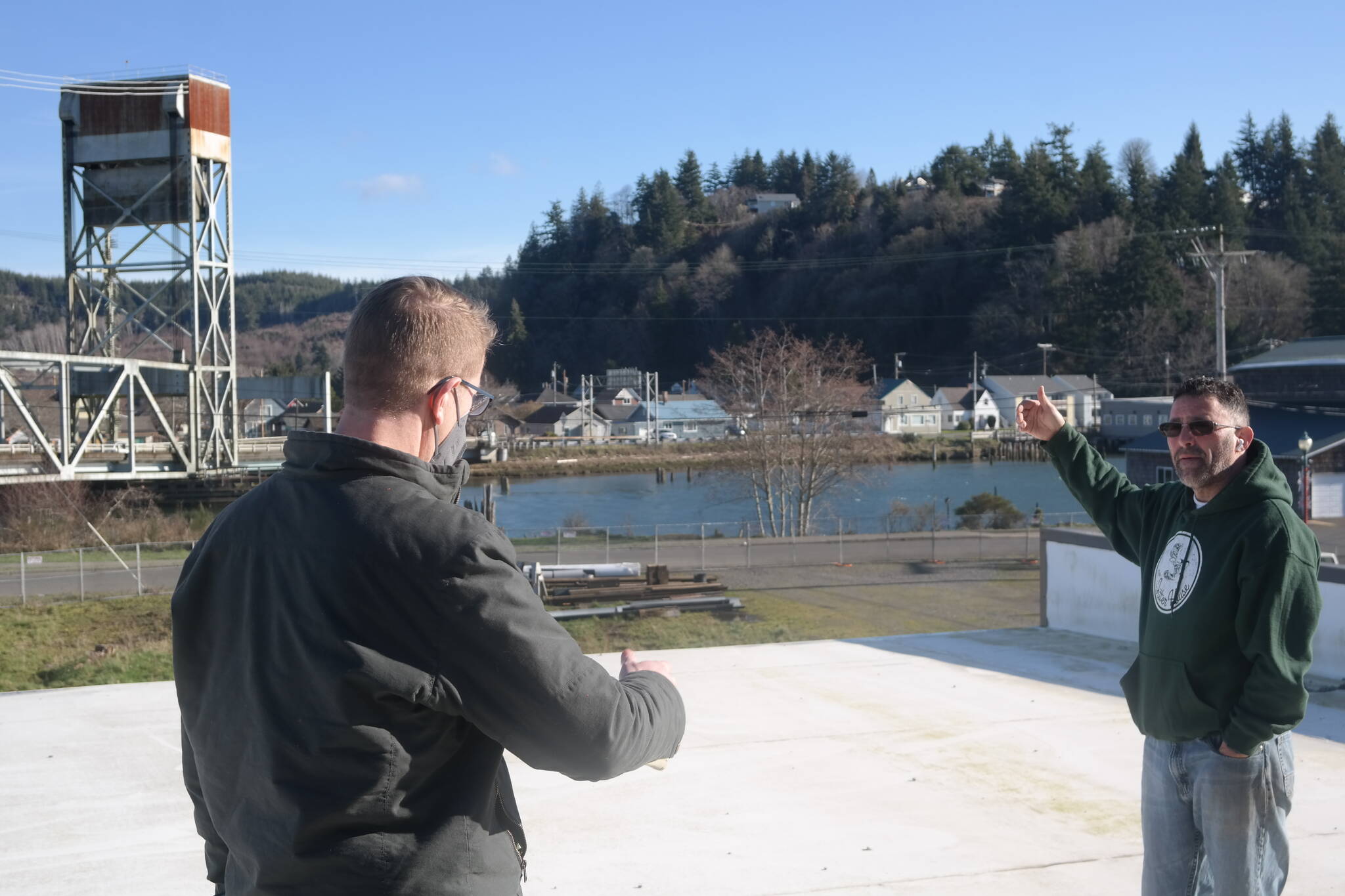Grays Harbor residents are no strangers to flooding. A combination of king tides, snowmelt, and historic rainfall led to high water levels and heavy ground saturation throughout the county in the opening weeks of 2022.
Some consequences, such as damage to property and roadways, were obvious: but others have lingered longer and could be more destructive to the community.
Congressman Derek Kilmer (D-Gig Harbor) met with Hoquiam Mayor Ben Winkleman and Hoquiam City Administrator Brian Shay on Friday morning, Feb. 11, to discuss the future of the Aberdeen-Hoquiam Flood Protection Project. City officials have been pursuing funding for the North Shore Levee-West Segment, which will provide crucial protection to commercial and residential properties located downtown near the Hoquiam River.
“Part of the reason this discussion matters so much is that not addressing it means that projects, like building affordable housing and other economic development, stop because you can’t build in a flood zone,” said Kilmer, who took a walking tour of downtown Hoquiam on Friday.
According to Shay, concerns over the complexity and additional expense of flood insurance recently halted the construction of a five-story affordable housing unit just a few blocks away from City Hall.
“I think a lot of people count that [flood insurance] in and don’t even think of constructing in the flood zone because of that extra cost,” said newly-appointed Timberland Bank and Timberland Bancorp, Inc. President Dean Brydon on a stop at the company’s riverside offices next to Al’s Hum-Dinger restaurant.
Once the levee is constructed and accredited, more than 3,100 properties in the two cities will be removed from the area the Federal Emergency Management Agency (FEMA) has designated as a Special Flood Hazard Area (SFHA) due to coastal flood risk. Owners of SFHA properties are subject to National Flood Insurance Program building code and flood insurance regulations. Aberdeen and Hoquiam residents currently pay more than $2 million in flood insurance a year.
“The levee will protect west Hoquiam, and should support community and residential economic development,” said Shay. “The money that residents spend on flood insurance would stay in the community and be reinvested locally.”
The estimated cost of the entire Aberdeen-Hoquiam Flood Protection Project is $120 million, but Shay believes Building Resilient Infrastructure and Communities (BRIC) grants could cover up to $80 million in costs, including a $50 million BRIC grant the city of Hoquiam applied for in December 2021.
“A $40 million loan between both cities would be doable,” he said.
Additional funding may also come from a recent capital budget request made by Kilmer to the House Appropriations Committee. Each representative may request funding for up to 10 projects for fiscal year 2022. Kilmer has requested $3 million dedicated for the Aberdeen-Hoquiam Flood Protection Project, with the city of Hoquiam listed as the intended recipient.
The congressmen’s walking tour of downtown Hoquiam focused on areas hard-hit by last month’s flooding, as well as new development projects that would be negatively affected by continued inundation.
An early stop at the Jitter House included a chat with owner Sam Nazario, who is in the process of renovating the storefronts adjacent to his coffee house. His vision is to open a restaurant focusing on Filipino and Puerto Rican food in a former department store, as well as a boutique hotel with a spa and steam room above a vacant bike store.
While Nazario’s business was thankfully spared by last month’s high water levels, such events saturate the ground of his construction projects and call for improved protection of commercial and residential properties located near Levee Street.
According to the Friday update from Shay, federal funding for the levee project is “looking favorable”. The upcoming fiscal year 2022 omnibus government funding bill may also prove fruitful for the project, according to Kilmer.
“The goal is to have both segments ‘shovel ready’ by the end of 2023,” said Shay.



